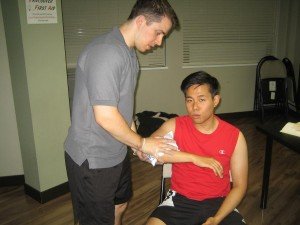A broken elbow can occur in various ways. It can be due to overuse or an acute traumatic event such as a fall or direct strike on the body part. Some of the usual events that results to a broken elbow include the following:
- Falling backward in which the individual tries to break the fall with a stretched arm and open hand.
- High-impact trauma during vehicular collisions
- Direct blow or strike to the elbow
- A sideswipe injury occurs if the elbow is struck while the individual is resting an elbow out an open car window
- Other forms of direct injury to the elbow, wrist, shoulder or hand
Indications of a broken elbow

If an elbow shows any of these signs, it might indicate a fracture, sprain or another injury that necessitates medical care:
- Swelling of the elbow or in the area immediately below or above the elbow
- Deformity of the elbow or adjacent areas
- Discoloration, redness or bruising of the elbow
- Difficulty moving the elbow in its full range of motion
- Numbness, cool sensation or diminished sensation in the forearm, hand or fingers
- An open wound or cut after a traumatic injury
- Intense pain
- Tight sensation in the elbow or forearm
What should I do for a broken elbow?
It is vital to seek immediate medical care if an individual is suspected with a broken elbow. Call for emergency assistance if the injury is severe. While waiting for the emergency team to arrive, there are first aid measures that can be done such as:
- An open wound should be covered with a clean bandage. If bleeding is present, place firm pressure on the area and if possible, elevate the arm above the level of the heart and call for help.
- Apply an ice pack on the swollen area.
- Immobilize the fractured area using a cardboard that works as a splint.
- Do not attempt to straighten the broken bone or push it into place if it pierces out of the skin.
Quick Note / Disclaimer
The material posted on this page on broken elbow is for learning and educational purposes only. To learn to recognize and manage fractures including a broken elbow, register for a first aid and CPR course with Saskatoon First Aid.
